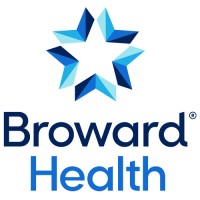

 On September 11, 2001, four civilian airplanes were hijacked to use as weapons against civilians. By the end of that bloody morning, there were nearly three thousand innocents slaughtered, the Pentagon was damaged, the Twin Towers were dust, and the landscape of American politics was changed forever. This past summer, Hurricane Katrina grazed South Florida, strengthened in the Gulf, and pursued its inexorable course to New Orleans, Mississippi and Alabama, leaving in its wake hundreds dead, thousands homeless, and as yet not fully tabulated billions in damage. Both events were extraordinary and inspired multibillion dollar national responses. However, neither event occurred without warning. Nearly a decade earlier, the very same buildings in New York had been victim to the same Islamo-fascist campaign of world domination. Retreat from barracks attacks in Lebanon, anemic responses to embassy bombings in Africa and the attack on the USS Cole had only emboldened the architects of global jihadismin retrospect, the results were somewhat predictable. In New Orleans, the citys engineers had developed models which predicted the precise course of events which ensued from a direct hit from a category IV or greater hurricane. For some reason, there seems to be some sort of threshold of drama necessary to inspire human response.
On September 11, 2001, four civilian airplanes were hijacked to use as weapons against civilians. By the end of that bloody morning, there were nearly three thousand innocents slaughtered, the Pentagon was damaged, the Twin Towers were dust, and the landscape of American politics was changed forever. This past summer, Hurricane Katrina grazed South Florida, strengthened in the Gulf, and pursued its inexorable course to New Orleans, Mississippi and Alabama, leaving in its wake hundreds dead, thousands homeless, and as yet not fully tabulated billions in damage. Both events were extraordinary and inspired multibillion dollar national responses. However, neither event occurred without warning. Nearly a decade earlier, the very same buildings in New York had been victim to the same Islamo-fascist campaign of world domination. Retreat from barracks attacks in Lebanon, anemic responses to embassy bombings in Africa and the attack on the USS Cole had only emboldened the architects of global jihadismin retrospect, the results were somewhat predictable. In New Orleans, the citys engineers had developed models which predicted the precise course of events which ensued from a direct hit from a category IV or greater hurricane. For some reason, there seems to be some sort of threshold of drama necessary to inspire human response.
Let us consider the following. Every single day, nearly as many people in America die of cardiovascular disease as died on that tragic September day four years ago. Every single year, many times the number of people displaced by Katrina are dislodged from productive work or even their homes from the ravages of congestive heart failure, which each kills hundreds of times the number of victims in this country who have fallen in all the hurricanes of the last decade combined. A recent series of articles in the Lancet (1.2) dispels the myth that these are the problems of the highly developed countries of the world. In fact cardiovascular disease represents 30% of the projected total worldwide deaths from chronic disease in 2005. Fully 80% of the 35 million deaths this year from heart disease, stroke and other chronic diseases will be in low- to middle-income countries. Unchecked, this figure is predicted to rise to 41 million by 2015. Now heres the most incredible fact of all80% of the deaths from cardiovascular disease are preventable, based on current medical knowledge. Results of the 52-country, five continent INTERHEART Study demonstrate that 90% of the population attributable risks in men and 94% in women can be accounted for by nine potentially modifiable risk factorssmoking, abnormal lipids, hypertension, diabetes, abdominal obesity, psychosocial factors, consumption of fruits and vegetables, and alcohol, and regular physical activity. These results were demonstrable in all regions of the world at all ages.(3)
The obvious question arises. Do 35 million deaths annuallynearly one million in the United States aloneconstitute a disaster? Put another way, the question might well be posed, is there any disaster threatening the world, with the potential exception of nuclear holocaust, which threatens such a toll of human death and suffering? As with 9/11 and Katrina, the facts are before us. The specific solutions may not be obvious. But, as with all predictable disasters, the most critical component is the decision–the commitment–to do something about it.
Post Views: 824
 On September 11, 2001, four civilian airplanes were hijacked to use as weapons against civilians. By the end of that bloody morning, there were nearly three thousand innocents slaughtered, the Pentagon was damaged, the Twin Towers were dust, and the landscape of American politics was changed forever. This past summer, Hurricane Katrina grazed South Florida, strengthened in the Gulf, and pursued its inexorable course to New Orleans, Mississippi and Alabama, leaving in its wake hundreds dead, thousands homeless, and as yet not fully tabulated billions in damage. Both events were extraordinary and inspired multibillion dollar national responses. However, neither event occurred without warning. Nearly a decade earlier, the very same buildings in New York had been victim to the same Islamo-fascist campaign of world domination. Retreat from barracks attacks in Lebanon, anemic responses to embassy bombings in Africa and the attack on the USS Cole had only emboldened the architects of global jihadismin retrospect, the results were somewhat predictable. In New Orleans, the citys engineers had developed models which predicted the precise course of events which ensued from a direct hit from a category IV or greater hurricane. For some reason, there seems to be some sort of threshold of drama necessary to inspire human response.
On September 11, 2001, four civilian airplanes were hijacked to use as weapons against civilians. By the end of that bloody morning, there were nearly three thousand innocents slaughtered, the Pentagon was damaged, the Twin Towers were dust, and the landscape of American politics was changed forever. This past summer, Hurricane Katrina grazed South Florida, strengthened in the Gulf, and pursued its inexorable course to New Orleans, Mississippi and Alabama, leaving in its wake hundreds dead, thousands homeless, and as yet not fully tabulated billions in damage. Both events were extraordinary and inspired multibillion dollar national responses. However, neither event occurred without warning. Nearly a decade earlier, the very same buildings in New York had been victim to the same Islamo-fascist campaign of world domination. Retreat from barracks attacks in Lebanon, anemic responses to embassy bombings in Africa and the attack on the USS Cole had only emboldened the architects of global jihadismin retrospect, the results were somewhat predictable. In New Orleans, the citys engineers had developed models which predicted the precise course of events which ensued from a direct hit from a category IV or greater hurricane. For some reason, there seems to be some sort of threshold of drama necessary to inspire human response. 



























